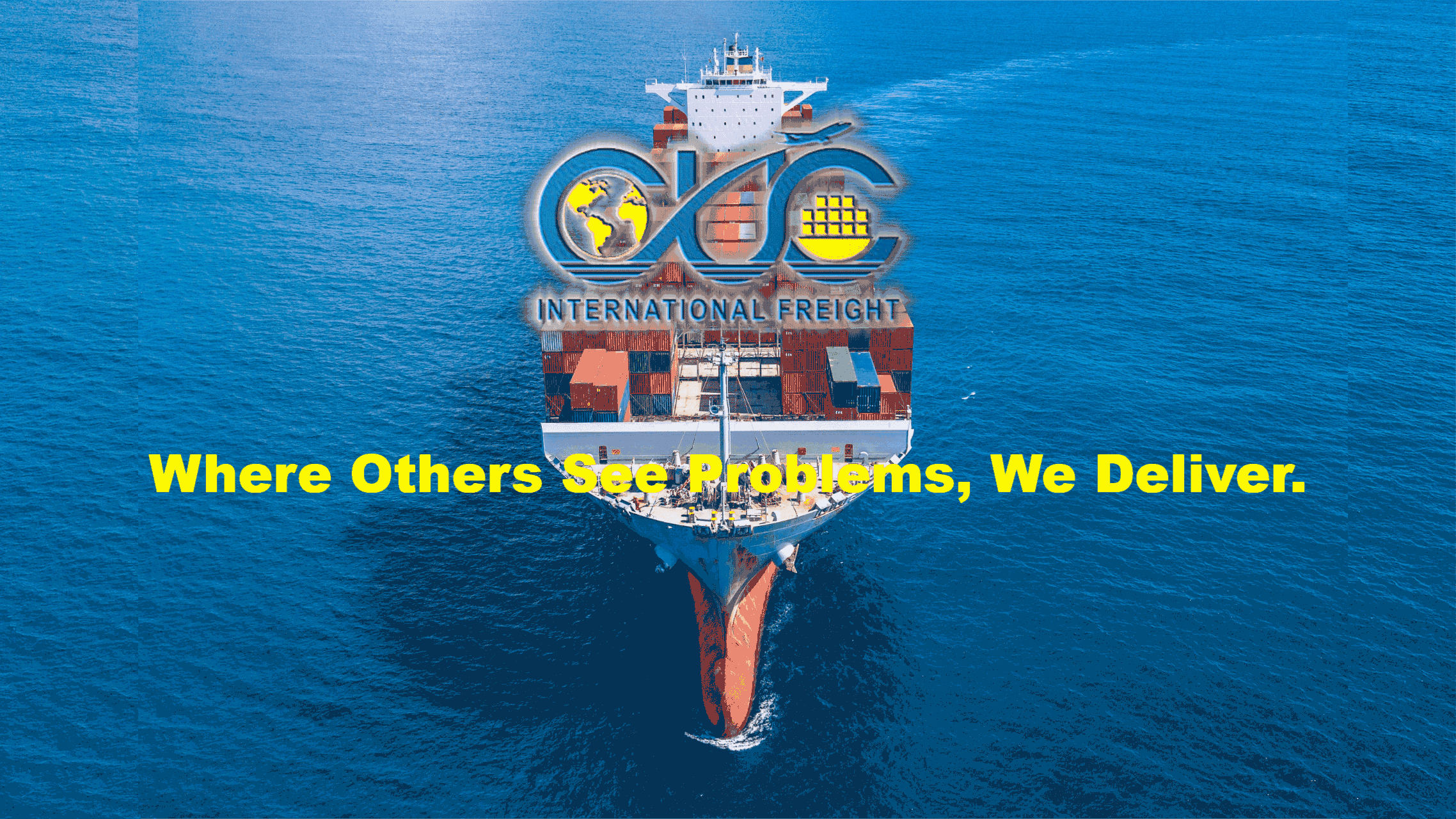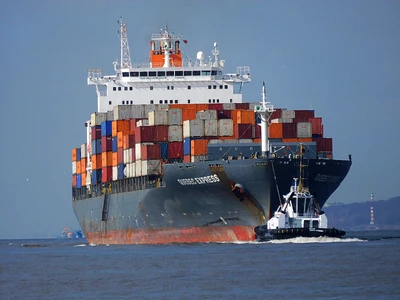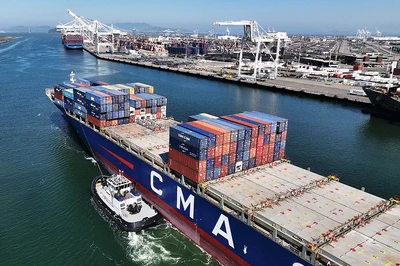
In the realm of logistics, the choice between air freight and sea freight can significantly impact the efficiency and cost-effectiveness of transporting goods. Understanding the differences between these two modes of transportation is crucial for businesses seeking to optimize their supply chain operations. In this article, we'll delve into the disparities between air and sea freight, examining factors such as speed, cost, suitability for different types of cargo, environmental impact, and more.

Air freight is renowned for its speed and efficiency. It offers rapid transit times, making it ideal for time-sensitive shipments. However, this expedited service often comes at a premium cost. Air freight is generally more expensive than sea freight, particularly for large or heavy cargo due to weight and size restrictions imposed by airlines. Despite these drawbacks, air freight remains a preferred choice for perishable goods, high-value items, and urgent deliveries.
Sea freight, on the other hand, is celebrated for its cost-effectiveness, especially for bulky or non-perishable goods. While sea freight entails longer transit times compared to air freight, it offers substantial cost savings, making it a popular choice for businesses with flexible delivery schedules. Additionally, sea freight accommodates oversized cargo that may exceed the limitations of air transportation. However, the extended transit times associated with sea freight can pose challenges for time-sensitive shipments.
When comparing transit times, air freight undeniably holds the advantage. Shipments sent via air typically arrive at their destination much faster than those transported by sea. While air freight ensures swift delivery, sea freight entails longer lead times due to the slower pace of maritime transportation. Therefore, businesses must consider their specific delivery requirements when choosing between air and sea freight.
Cost considerations play a pivotal role in the decision-making process between air and sea freight. Air freight commands higher rates due to its speed and efficiency, making it a preferred choice for urgent shipments despite the elevated costs. Conversely, sea freight offers substantial savings in transportation expenses, particularly for large-volume shipments. By analyzing the cost differentials between air and sea freight, businesses can make informed decisions based on their budgetary constraints and delivery timelines.
The suitability of air or sea freight depends largely on the nature of the cargo being transported. Air freight is best suited for perishable goods, high-value merchandise, and time-sensitive shipments requiring expedited delivery. In contrast, sea freight is ideal for bulky, non-perishable items that can withstand longer transit times. Understanding the unique characteristics of each mode of transportation enables businesses to select the most appropriate method for their specific cargo requirements.
Environmental sustainability is a growing concern in the logistics industry. When comparing air and sea freight, sea transportation is generally considered more environmentally friendly due to lower carbon emissions per ton of cargo transported. Air freight, with its reliance on aviation fuel, contributes significantly to carbon emissions and environmental pollution. As businesses strive to reduce their carbon footprint, sea freight emerges as a more eco-conscious alternative for long-distance transportation.
Insurance coverage is essential in mitigating risks associated with freight shipping. While both air and sea freight offer insurance options, the extent of coverage may vary between the two modes of transportation. Air freight insurance typically incurs higher premiums due to the elevated risks associated with air travel. Conversely, sea freight insurance premiums are relatively lower, making it a cost-effective choice for businesses seeking comprehensive coverage for their cargo.
The accessibility of air and sea freight services varies depending on geographical factors and infrastructure capabilities. Air freight enjoys greater accessibility to major metropolitan areas and international airports, providing efficient connectivity across global supply chains. Sea freight, while slower in transit, offers accessibility to a broader range of destinations, including remote ports and inland waterways. The choice between air and sea freight hinges on the accessibility requirements of the shipment's origin and destination.
Navigating customs clearance procedures and documentation requirements is an integral aspect of international shipping. Air and sea freight entail distinct processes for customs clearance, necessitating meticulous attention to detail to ensure compliance with regulatory standards. Air freight typically involves faster customs clearance procedures, whereas sea freight may encounter delays due to stringent inspection protocols. Understanding the documentation prerequisites for each mode of transportation is crucial for facilitating smooth cargo transit and avoiding logistical setbacks.
Effective risk management is essential for safeguarding cargo during transit. Both air and sea freight present inherent risks, including theft, damage, and logistical disruptions. Implementing risk mitigation strategies, such as robust packaging, tracking systems, and insurance coverage, can help mitigate potential losses associated with freight shipping. By proactively addressing risk factors, businesses can enhance the security and reliability of their supply chain operations, regardless of the chosen mode of transportation.
Customer preferences and industry trends exert considerable influence on the dynamics of freight shipping. Factors such as delivery speed, cost-effectiveness, and environmental sustainability shape customer preferences between air and sea freight. Moreover, emerging trends in the logistics industry, such as the adoption of eco-friendly practices and advancements in technology, continue to redefine the landscape of freight transportation. By staying abreast of evolving customer preferences and industry trends, businesses can adapt their shipping strategies to align with market demands and enhance their competitive edge.
The choice between air and sea freight hinges on various factors, including transit times, cost considerations, cargo characteristics, environmental impact, and regulatory requirements. While air freight offers speed and efficiency, sea freight provides cost-effectiveness and capacity for large shipments. By carefully evaluating these factors and aligning them with their specific shipping needs, businesses can select the most suitable mode of transportation to optimize their supply chain efficiency and meet customer expectations.
While air freight is generally more expensive than sea freight, the cost differentials vary depending on factors such as shipment size, weight, and destination.
Air freight is best suited for perishable goods, high-value merchandise, and time-sensitive shipments requiring expedited delivery.
Air freight offers faster transit times compared to sea freight, making it ideal for urgent shipments. Sea freight entails longer lead times but offers cost savings for large-volume shipments.
Sea freight is generally considered more environmentally friendly than air freight due to lower carbon emissions per ton of cargo transported. Businesses should weigh the environmental impact of each mode of transportation in their decision-making process.
Implementing risk management strategies such as robust packaging, tracking systems, and insurance coverage can help mitigate potential losses associated with freight shipping, regardless of the chosen mode of transportation.
Copyright Statement:
All images in this article have been used with diligent efforts to verify sources. Regarding copyright matters:
1️⃣ Rights holders are hereby advised to assert your claims via the contact information at the bottom of this article
2️⃣ We shall legally cooperate in replacing, removing disputed content, or negotiating authorized usage
3️⃣ Third-party users reproducing this article must independently verify image sources and licensing status
 Reduce the risk of high tariffs with full container DDP solutionsMay 6, 2025Global trade is becoming increasingly complex. In April, the United States announced that it would impose a total tariff of up to 145% on China. After China took countermeasures, the cumulative tariff...view
Reduce the risk of high tariffs with full container DDP solutionsMay 6, 2025Global trade is becoming increasingly complex. In April, the United States announced that it would impose a total tariff of up to 145% on China. After China took countermeasures, the cumulative tariff...view Understanding the CIP Incoterm: Carriage and Insurance Paid toMay 30, 2025The CIP (Carriage and Insurance Paid To) Incoterm is one of the 11 internationally recognized trade terms defined by the International Chamber of Commerce (ICC). It outlines the responsibilities of bu...view
Understanding the CIP Incoterm: Carriage and Insurance Paid toMay 30, 2025The CIP (Carriage and Insurance Paid To) Incoterm is one of the 11 internationally recognized trade terms defined by the International Chamber of Commerce (ICC). It outlines the responsibilities of bu...view_400x400.webp) Trump's 'explosive' global tariffs take effect - including a 104% rate on ChinaApril 9, 2025New tariffs won't apply to goods already heading to US - expertDonald Trump's latest tariffs have come into effect - but what do they mean for international trade? The president of global logi...view
Trump's 'explosive' global tariffs take effect - including a 104% rate on ChinaApril 9, 2025New tariffs won't apply to goods already heading to US - expertDonald Trump's latest tariffs have come into effect - but what do they mean for international trade? The president of global logi...view It is expected that the Port of Baltimore will resume full navigation before the end of MayApril 24, 2024According to CUC Freight, citing China News Agency, US President Biden came to Baltimore, Maryland inspect the recently collapsed Francis Scott Key Bridge. Biden said reopening the Port of Baltimore i...view
It is expected that the Port of Baltimore will resume full navigation before the end of MayApril 24, 2024According to CUC Freight, citing China News Agency, US President Biden came to Baltimore, Maryland inspect the recently collapsed Francis Scott Key Bridge. Biden said reopening the Port of Baltimore i...view